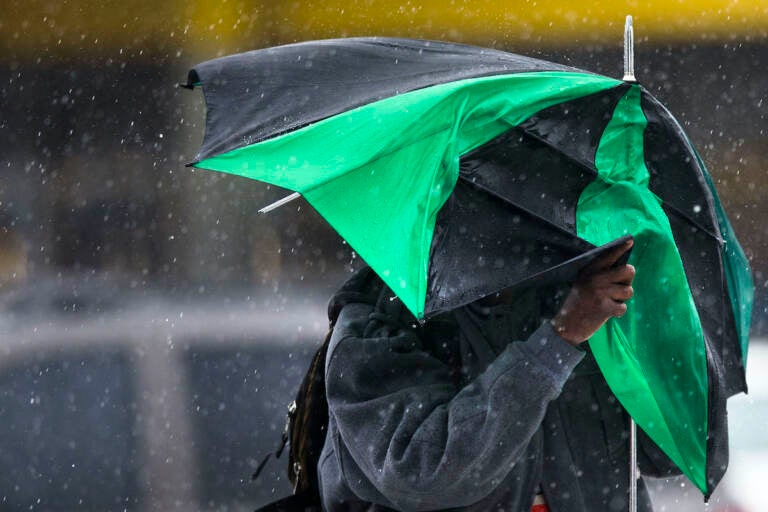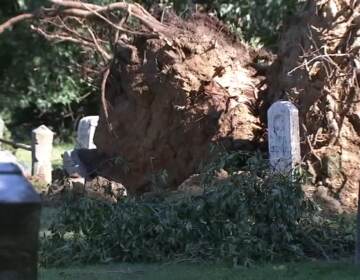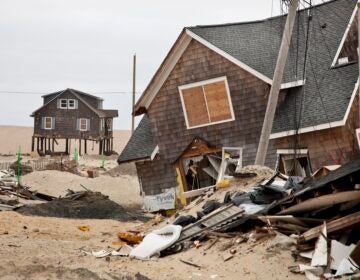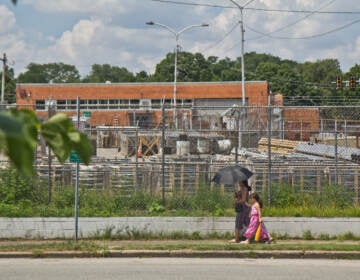NWS in Mount Holly issued 123 thunderstorm warnings during July, the 2nd highest on record
NWS meteorologists attribute the above average activity to a noticeable increase in humidity and fluctuations in the jet stream.

A pedestrian walks with little protection from his collapsed umbrella during a rainstorm, Wednesday, April 30, 2014, in Philadelphia. (AP Photo)
The National Weather Service in Mount Holly, which serves most of the Delaware Valley, issued 123 severe thunderstorm warnings last month, just shy of the record set in 2021.
Meteorologist Alex Dodd said the storm spike could be attributed to the increased humidity due to warming waters in the Atlantic and Gulf of Mexico and fluctuations in the jet stream, which studies have shown are impacted by rising temperatures.
“That’s really combined to bring us a kind of a quick onset to a very wet and stormy late spring and the summer more than we typically see,” he explained.
Dodd said it’s not something anyone saw coming, noting the difficulty of making seasonal predictions.
“We can do a few months out in advance, and even that is kind of touch and go sometimes,” Dodd said. “There’s just so many factors involved globally that that end up affecting our weather patterns months in advance … If just one of those factors is kind of awry, then it can kind of throw our forecast completely off.”
In 2021, the NWS issued 132 thunderstorm warnings for the area. Weather systems then and now are similar, Dodd said, except for the more active jet stream this year.
“It’s been hanging in around our vicinity with more and more frequent weather systems moving through into the summer months. Most years we don’t see that and we see less severe thunderstorms than we have this year.” he said.
Other record highs include 117 in 2006 and 114 in 2019.
In July, multiple people were killed in Bucks County due to flash flooding after a month’s worth of rain came down in two hours. Climate scientists believe storms like these are becoming more common due to human-caused climate change.
In contrast, zero severe thunderstorm warnings were issued during the month of May, which also happened to be the driest May on record for multiple parts of the Philly metro area.
WHYY is your source for fact-based, in-depth journalism and information. As a nonprofit organization, we rely on financial support from readers like you. Please give today.






